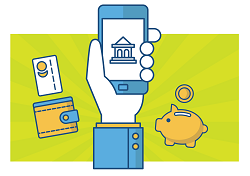FIS Details How Younger Consumers—and Some Older Peers—Are Driving Digital Banking
 Nearly half—49 percent—of millennial consumers had paid a bill via mobile within 30 days of a survey conducted for a new report from FIS. That data point underscores the growing importance of digital financial services and payments not only for younger consumers but their older counterparts.
Nearly half—49 percent—of millennial consumers had paid a bill via mobile within 30 days of a survey conducted for a new report from FIS. That data point underscores the growing importance of digital financial services and payments not only for younger consumers but their older counterparts.
The “2017 FIS Consumer Banking Pace Report” found that 46 percent of millennial consumers transferred funds between bank accounts; 34 percent deposited a check remotely using a mobile app; and 22 percent paid someone using a payment service app within 30 days of the FIS survey. FIS based its findings on a December 2016 survey of 8,000 banking consumers in eight countries: Australia, Brazil, Canada, Germany, India, Thailand, the U.K. and the U.S.
More broadly, the study found increasing support for digital payments:
- 47 percent of millennial consumers now consider digital payments important, up from 41 percent for the previous year’s study.
- 41 percent of Generation X consumers now consider digital payments important, up from 35 percent for the previous year’s study.
- 40 percent of baby boomer consumers now consider digital payments important, up from 31 percent for the previous year’s study.
Among the digital financial services that are becoming more important are P2P payments, the report said. During the 30 days previous to the survey, 30 percent of consumers between the ages of 18 and 25 conducted a P2P transaction via a financial institution’s app. That compares with 17 percent for consumers age 26 to 36; 3 percent for consumers age 37 to 51, and 1 percent for consumers age 52 to 79. “Payments help cement connections to the banking provider and support consumers in fulfilling their aspirations,” the report said.
The report also identified a consumer segment that is driving financial services innovation: Gen MX, or what FIS called “higher-income Gen Xers and senior millennials that share strikingly similar banking behaviors and who are increasingly transferring their personal preferences for digital channels into all areas of how they bank and run their businesses.” That segment, for instance, is more likely to use regional banks as primary financial institutions; handle roughly 75 percent of banking interactions online or via mobile; and soon will have “one major life event” that will impact their finances.
“These digital power users are creating the future of banking and payments, and financial institutions of all sizes need to be paying attention to serving their needs,” said Anthony Jabbour, chief operating officer, banking and payments, FIS.
Related stories:











































